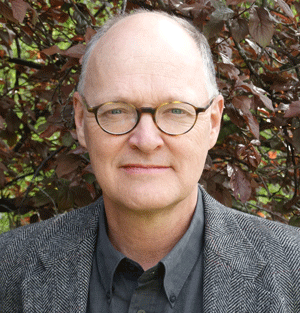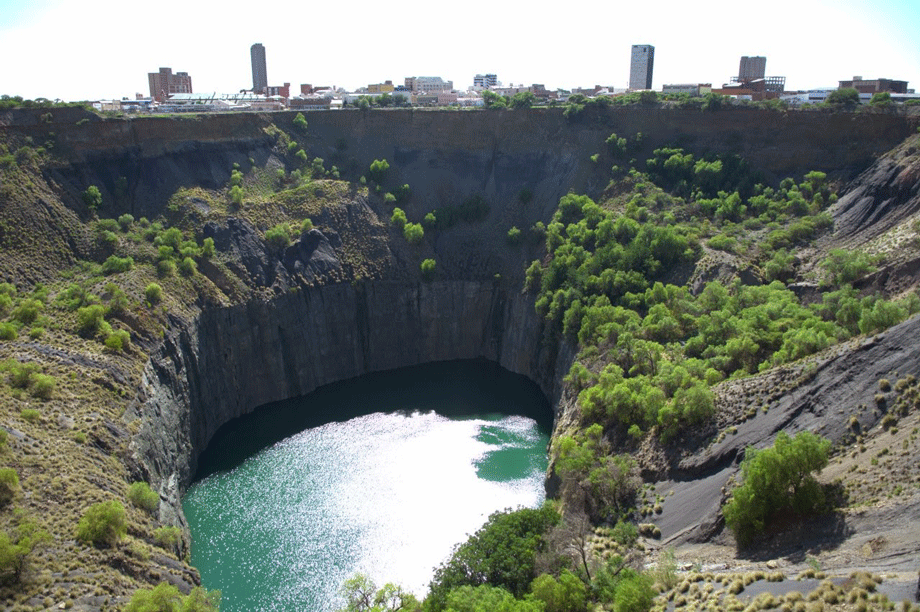Interview with Jan-Bart Gewald: 'Without the diamond mines in Kimberley, southern Africa wouldn’t be as it is now'

On the occasion of Jan-Bart Gewald’s selection as a fellow at Stellenbosch Institute for Advanced Study (STIAS), we interviewed him about the research project The 'Big Hole', Kimberley South Africa, 1870-1920 which he will conduct there. Jan-Bart Gewald is Professor of African History at Leiden University, a former director (2017-2021) of the ASCL and a senior researcher.
You will soon start your fellowship at STIAS. Can you tell us a bit more about the research you will conduct in Kimberley?
‘Without “the Big Hole”, as the diamond mine in Kimberley is called, southern Africa wouldn’t exist as it is now. Without Kimberley, there wouldn’t have been a unified South Africa. Kimberley initiated the industrial mining revolution that has formed South Africa from 1870. The first diamonds were found there in 1870. Cecil John Rhodes (Prime Minister of the Cape Colony 1890-1896), who entered the diamond trade there in 1871 aged 18, was able to expand and develop the mines of the Witwatersrand. Through the capital yielded and the British cabinet’s consent to invade what is now called Zambia and Zimbabwe (then called Northern and Southern Rhodesia, after Rhodes), the power structures of southern Africa came into existence. Also Botswana wouldn’t have existed as it exists now, because they pleaded for independence from Rhodes. Malawi and parts of Namibia would not have come into existence because of the wealth found at Kimberley.’
What will you look at specifically?
 ‘Lots of researchers have looked at migrant labourers and capital there, and also the social impact of the mining exploration, but no one has looked at the environmental impact of the mining. While this impact is enormous. So this is what I will focus on.
‘Lots of researchers have looked at migrant labourers and capital there, and also the social impact of the mining exploration, but no one has looked at the environmental impact of the mining. While this impact is enormous. So this is what I will focus on.
The first diamonds were found at the base of camelthorn trees; these trees were chopped down in an area of 250 km. There are no trees to be found there older than eighty years. In 1870, in six months’ time, 30,000 men swarmed there. What did they eat? Apparently, they also ate sardines, coming from the Mediterranean. What did they wear, where did their clothes come from, and the rope they used? Where did the oxen and the mules that were used for labour come from? Everything that was needed there, was transported by ox waggons. It took one-and-a-half month to travel from Cape Town to Kimberley, and a waggon would have 18 or 36 oxen. What did they eat? Mules were imported from Spain and Argentina, and they purportedly would not eat South African grass…
And what were the consequences for the native animals? For example the quagga, a subspecies of the zebra that was endemic to South Africa, was hunted to extinction in the late 19th century by European settler-colonists. The springbok stopped migrating. So the project looks at the mines and links their development to the wider world.’
How will you do research?
‘I have already been to Kimberley to access the archival holdings of the Africana Library of the Duggan Cronin Gallery and the McGregor Museum, and I will continue to do research there. I have not yet received permission to access the De Beers Archives, I have not even received a reply to my request dating from September 2021. In 1884, all mines in Kimberley were amalgamated into De Beers Consolidated Mines under Cecil John Rhodes. De Beers were the brothers on whose farm the mines were found, so hence the name.
I will also take a look at the mine digging that is happening now. This may seem small activity nowadays, varying from a single person working with a shovel and a sieve, to a company of 60 employees, but bulldozers and front-end loaders are used to remove extensive areas of topsoil, and this has an enormous impact on the environment.’
What is Kimberley like now?
‘Kimberley was built on the material from the mines. The mines gave the De Beers company incredible wealth. The wealth went to London and to Rhodes, who could even buy British Parliament and have his own army. The profits also flowed to shareholders elsewhere, and was used to further develop the mines. But it didn’t go to the South African people.
The mining company has now left Kimberley, and it has become a poor town. A new university has been started there, but it is a dying town. People are digging under the buildings again to see if they can find diamonds there. This is also happening because of the massive unemployment. This desperate search can be seen in more places in South Africa. Last June, there was a massive search for diamonds that were actually quartz in Natal, even mums with babies could be seen. It’s a shame, because diamond mining is more akin to gambling than to a serious business undertaking.’
How come in Botswana the people did benefit from mining profits?
‘In the 1960s and 1970s the Botswana government was well advised by the Norwegians. This advice was: half of the profits will flow to the Botswana government, and half to the De Beers company. So, mines can benefit countries, they can help develop a country, see the Netherlands. But the long-term disruptiveness was not seen immediately. Although, in 1903 De Beers Consolidated Diamond Mines appointed a meteorologist to study and describe the weather around Kimberley. Interestingly he published a series of articles in which he sought to describe the impact of mining on the weather of Kimberley.’
What is the importance of researching the past for today’s world?
‘It is important to understand why Kimberley exists, what the impact of mining is on the whole of society, not just on politics or capital, and to bring to light the disruptive aspects of mining. To place question marks around the success stories on the stock market. What does mining do for sustainable wealth? See Kimberley now. There are similar developments in Australia, Broken Hill, which suffers from desertification. Similarly, the oil and gas fields of North Eastern Netherlands brought substantial wealth, but at an enormous and lasting impact on the environment.’
When you were director of the ASCL, you emphasised the importance of fundamental research. Why is that so important?
‘Fundamental research is important because we do not know the questions of the future. Mining in South Africa has contributed to climate change. We now live in a period of climate change, but people didn’t know this would be the effect of what they were doing back then. It is certainly useful to do research on topical issues for a government, but we do not know what will be useful in the future, and therefore fundamental research will always be necessary.
Years ago I did research on the Great Influenza epidemic that spread around the world from 1918. This was fundamental research, it wasn’t a topical issue back then. But I knew: this will happen again, it will last for at least three years, and it will have a disruptive effect.’
What achievements of your directorship are you most proud of?
‘I am proud of the establishment of the Graduate Programme African Studies at the ASCL. I’m proud that we will have the ASCL Library central in the new building we will move to with a number of other Leiden research institutes in the near future. The researchers will be placed around the Library, which will lead to more integrated cooperation between research and library staff. And I’m very proud of the new young researchers we were able to attract: Rahmane Idrissa, Duncan Money, Lidewyde Berckmoes and Annachiara Raia, who has just won a Veni.’
Fenneken Veldkamp
>> On 1-3 June the workshop Gaping Holes: Towards multi-species histories and ethnographies of mining in southern Africa will be organised.

